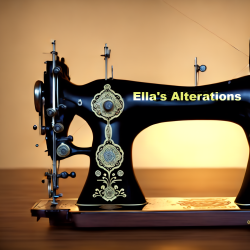Standard Alterations Pricing: The Basics
When it comes to the world of tailoring and alterations, understanding how to set and manage pricing is crucial. The art of alteration is intricate and requires a keen eye for detail, technical prowess, and a deep understanding of fabrics, fit, and fashion.
Standard alterations pricing is a nuanced subject that involves several factors, including the type of alteration, the complexity of the work, the materials used, regional costs, the tailor’s experience, and even the client’s needs. This article explores these factors and more, providing a comprehensive insight into the basics of standard alterations pricing.
Type of Alteration
The nature of the alteration is a significant factor in determining the price. Simple alterations like hemming a pair of trousers or taking in a waistband will generally cost less than more complex changes like restructuring a jacket’s shoulders or altering the bodice of an intricate wedding gown.
Consequently, tailors must assess each garment’s unique requirements and complexity to determine an appropriate price.
Here are some basic prices and descriptions.
Hemming Pants or Skirts ($15- $25):
Hemming involves adjusting the length of a garment, such as pants or skirts. This is a common alteration and can vary in price depending on the fabric and style of the hem desired.
Taking in or Letting out Waist on Trousers or Skirts ($20- $35):
This alteration modifies the waist size of trousers or skirts. The cost can fluctuate based on how much the garment needs to be adjusted and the complexity of the design.
Altering Shirt or Jacket Sleeves ($25- $50):
Adjusting the length of sleeves requires careful attention to the armhole, seam, and cuff placement. Prices may vary according to the garment’s fabric and construction.
Resizing a Jacket (Shoulders, Sides, etc.) ($30 – $75):
Resizing a jacket is a more complicated alteration that involves multiple adjustments. It can include the shoulders, sides, and other parts of the jacket to achieve the desired fit. Complexity and materials contribute to the varying cost.
Taking in or Letting out a Dress ($50- $80):
Whether it’s a casual dress or formal gown, resizing may include adjusting the waist, bust, and hips. The price range reflects the intricacy of the dress and the extent of changes needed.
Bridal Gown Alterations ($150 – $500+):
Wedding gowns often require specialized skills due to intricate beadwork, layers, and fine fabrics. The wide cost range accounts for various adjustments, from simple hemming to complete restyling.
Adding or Removing Zipper ($15 – $30):
This involves inserting or taking out a zipper, which can be affected by the type and quality of the zipper and the garment’s fabric. Most often the price of the zipper would not be included in this price. The zipper can range from $5 – $40 depending on the type of zipper.
Replacing Buttons ($5 – $15):
A seemingly simple task, but the cost can vary depending on the type of buttons, number needed, and their placement.
Shortening Shirt Sleeves ($15 – $30):
This alteration involves not just cutting the fabric but possibly adjusting the placket and cuffs, impacting the final price.
Adjusting Shirt Sides ($20 – $40):
Taking in or letting out the sides of a shirt requires precision to maintain the garment’s balance and proportion, affecting the cost.
Custom Fitting a Suit ($75 – $200):
A tailored suit demands attention to various parts of the jacket and trousers. The price reflects the labor-intensive nature of achieving the perfect fit.
Jeans Resizing (waist, legs) ($30- $50):
Whether it’s tapering the legs or adjusting the waist, jeans alterations require working with thicker materials, thus affecting the cost.
Adding Pockets to Garments ($30- $200):
Placement, size, and style of pockets require careful consideration and contribute to the alteration’s price.
Repairing Tears or Holes ($10 – $30):
Repairing a garment’s damage is a delicate task, and the cost depends on the extent of the damage and the fabric used.
Restyling an Old Garment ($50 – $150):
Transforming an outdated piece into something new involves creativity and skill, with the price reflecting the extent of the transformation.
Adding or Removing a Lining in a Coat or Jacket ($50 – $150):
The lining material, the coat’s construction, and the need for precise stitching all factor into the pricing for this alteration.
- Please note that these are generalized estimates, and actual costs can differ widely based on regional variations, tailor’s expertise, complexity of the garment, and the specific requirements of each alteration. Tailors may also offer package deals for multiple adjustments on a single garment. A consultation with a skilled tailor, like yourself, is often the best way to obtain an accurate and personalized quote.
Complexity of the Work
The complexity of the alteration often goes hand in hand with the type of alteration. A tailor’s work can range from the simple shortening of sleeves to the detailed reshaping of intricate lace or beadwork. More complex jobs require more time, skill, and sometimes even specialized equipment, all of which will contribute to a higher price.
Materials Used
The type of fabric and any additional materials needed will also play a role in the pricing. Working with delicate silks or robust leathers requires special care and different techniques compared to more common fabrics like cotton or polyester. Some alterations may also require specific threads, buttons, zippers, or other hardware, which can affect the overall cost.
Regional Costs
Where the tailoring business is located can influence pricing. In big cities, where rent and living costs are typically higher, alteration services might be more expensive compared to smaller towns or rural areas. Additionally, the local market’s competitive landscape and the demand for alteration services can also impact pricing.
Tailor’s Experience
A tailor’s experience and reputation in the industry can significantly influence pricing. A well-established tailor with years of expertise might charge more for their services than someone just starting in the profession. The quality of work, attention to detail, and ability to handle challenging alterations will often justify a higher price point.
Client’s Needs
Customizing a garment to fit a client’s particular needs is at the core of tailoring. Sometimes, rush jobs or special requests can affect the pricing. A client who needs a quick turnaround might expect to pay a premium, while specific customization requests can also lead to adjustments in the price.
Consultation and Fitting
A professional tailor’s process often starts with a consultation and fitting. This step is essential to understand the client’s needs and the garment’s requirements. Some tailors might include this in the overall cost, while others may charge separately for these services.
Competitors’ Pricing
Understanding the competitors’ pricing within the local market is essential for a tailor. Being aware of what others are charging for similar services can help in positioning one’s services competitively without underselling or overcharging.
Conclusion
Standard alterations pricing is far from one-size-fits-all. It is a multifaceted subject that demands an understanding of various elements that contribute to the final cost. From the type of alteration and complexity of the work to the materials used and the tailor’s experience, each aspect must be carefully considered.
Moreover, the regional variations, competitors’ pricing, and specific client needs further add layers of complexity to the pricing strategy. Being transparent, fair, and consistent with pricing while delivering high-quality work is essential for success in the alterations business.
Tailors, whether new to the industry or seasoned professionals, must remain attentive to these various factors to set their prices appropriately. In doing so, they ensure that their skills and expertise are valued rightly, their clients are satisfied, and their business thrives in the competitive world of fashion and alterations. By adhering to these basics, tailors can navigate the complex landscape of standard alterations pricing, fostering trust and loyalty among their clientele and securing a stable and rewarding position in the industry.

Previous: What to Look for When Choosing a Tailor Next Up: Suit Alterations: The Perfect Fit
